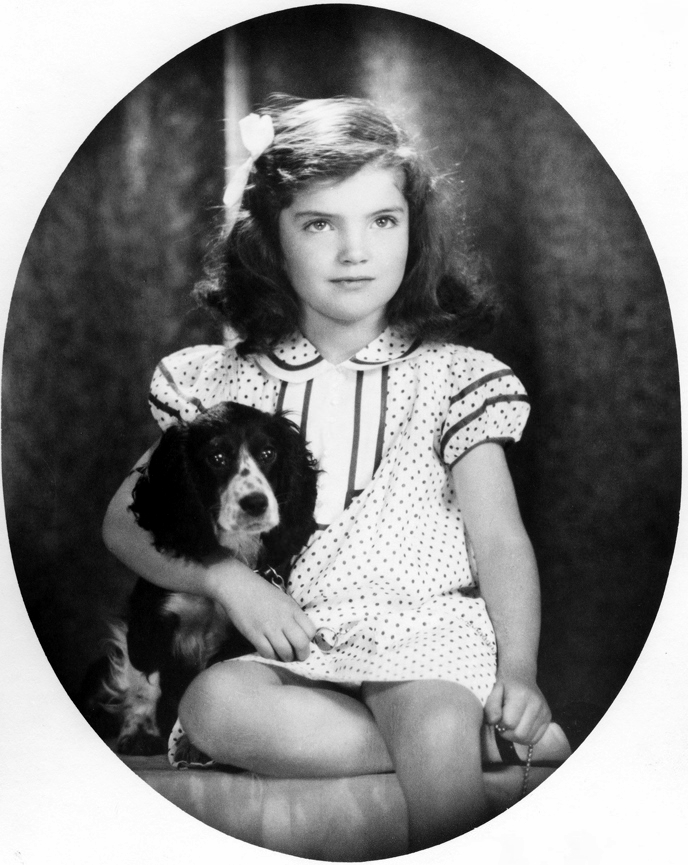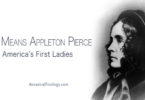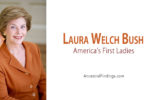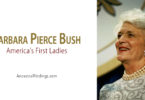Born on July 28, 1929, in Southampton, New York, Jacqueline “Jackie” Bouvier was a daughter of an elite, high society family, who would go on to become the thirty-fifth First Lady of the United States. She is also among the most well-known and popular of the First Ladies, usually ranking only below Eleanor Roosevelt and Abigail Adams as the most influential or important.
The 1st First Lady to be born in the 20thcentury, Jackie was the daughter of stockbroker John “Black Jack” Bouvier III and Janet Norton Lee, a socialite. Both of her parents were of Irish descent, with some French and Scottish on her father’s side, and Jackie was baptized and raised as a Catholic.
She grew up well educated at some of the best schools in New York, and excellent as an equestrian at a young age. She was also accomplished at ballet dancing, was an avid reader, and knew several languages, with French being the most prominent, and the one in which she was the most fluent. She was also the clear favorite of her father among her sisters, a fact he never tried to hide. This contributed to Jackie’s self-confidence growing up.
Jackie’s parents divorced in 1940, after four years of separation; this was mainly due to her father’s alcoholism and affairs with other women. Some financial difficulties from the stock market crash the year Jackie was born also contributed to the crumbling of the marriage. The press covered the divorce in intimate details, which caused the normally outgoing Jackie to withdraw into herself and become shy. The divorce made her more different from her peers than she already was, as she was Catholic, which was a minority religion in the United States, and the divorce was at a time when most children had parents who stayed married.

Jackie’s mother remarried to Hug Dudley Auchincloss, Jr., the heir to the Standard Oil fortune. From this marriage, Jackie gained three step-siblings, a half-brother, and a half-sister. Jackie and her sisters divided their time between their mother and father’s houses, but Jackie became particularly close to her step-father, who gave her a much more pampered childhood than she would have otherwise experienced, as well as offered her stability, which her life lacked during her parents’ marriage. She did remain close with her father, but her mother and step-father’s house was “home” to her.
Jackie graduated from George Washington University in 1952 with a degree in French literature and went to work for the Washington Times-Herald as a photographer. The same year she graduated, she met Congressman John F. Kennedy at a dinner party. They fell in love quickly, being attracted not only to each other’s good looks, but to each other’s wit, intelligence, and wealth. They married in 1953.
Following their marriage, they had four children together, after an initial miscarriage. Their first child, a daughter named Arabella, was full-term, but stillborn. They then had daughter Caroline and son John Jr. Finally, only three months before her husband was assassinated, Jackie gave birth to their fourth and final child, a son named Patrick, who was born five weeks early and died after only two days, due to a pre-existing health condition at birth.
When John became president, he and Jackie were noticeably different from their predecessors, the Eisenhowers. Not only were they Democrats, as opposed to the Republican Party to which the Eisenhowers belonged, they were also much younger and vital, more active in national and personal affairs, and had a more intimate relationship with the media. Jackie was highly protective of her children and strictly limited the extent to which she allowed the media to photograph them. She became the first First Lady to hire her own press secretary, who helped her manage her own media image.
While First Lady, Jackie always stated that her first priority was her family, but she also involved herself heavily in the promotion of American arts and historical preservation. She oversaw an extensive restoration of the White House. In addition, while previous First families had taken furniture and other things acquired during their tenure with them when they left, Jackie persuaded Congress to make it a law that those things had to be donated to the Smithsonian, so important historical artifacts associated with the White House would not be lost. Jackie spent much time as First Lady tracking down the current owners of former White House furnishings and trying to persuade them to return them to the White House or donate them to the nation.

She was the 1st First Lady to win an Emmy (and so far only First Lady to do so), for a 1962 televised tour, she gave of the White House.
After the assassinations of both her husband and brother-in-law (Robert Kennedy), Jackie became concerned for the safety of her children, imagining they had targets on them because they were Kennedys, and people seemed to be killing Kennedys. She did the only thing she knew to do to protect them… she remarried, to her old friend Aristotle Onassis, a wealthy shipping magnate from Greece. Aristotle was able to provide both the privacy and security she was looking for herself and her children. By marrying him, she gave up the right to Secret Service protection, which is a right of all First Lady widows, but Aristotle had enough money to provide superior security.
Though remarried, she was still a popular target of paparazzi, who followed her around pretty much wherever she went and gave her the nickname “Jackie O” (which stood for “Jackie Onassis”). Kennedy family members were invited over to visit often at the six different residences Aristotle owned, so the children could maintain relationships with their Kennedy relatives; Jackie and the kids became particularly close to Ted Kennedy.
Aristotle died in 1975 at age sixty-nine. Though he died in Paris, Greek laws governed his financial legacy and severely limited what Jackie could inherit. This was because Jackie was not Greek. She eventually accepted $26 million from his estate, with the rest going to Aristotle’s only legal heir, his daughter, Christina.
After Aristotle died, Jackie returned to the United States, living at residences in Manhattan, Martha’s Vinyard, and Hyannis Port, Massachusetts (where the Kennedy family compound is located). She became a consulting editor at Viking Press for a couple of years, as well. She took up a relationship with Maurice Tempelsman, and industrialist and diamond merchant; they never married because Maurice was already married, but estranged from his wife. Their relationship continued for the rest of Jackie’s life.
In January 1994, Jackie publicly announced that she had lymphoma, and her prognosis was good. However, she quickly deteriorated despite the good prognosis from her doctors and died on May 19, 1994, at her home in Manhattan. According to her son, John Jr., Jackie,
“did it in her very own way and on her own terms, and we all feel lucky for that.”
Jackie was buried at Arlington National Cemetery beside her husband, John F. Kennedy, and their two children who died as infants, Arabella and Patrick. US President Bill Clinton delivered the eulogy at her graveside service, while the funeral itself was held prior to that at the Church of St. Ignatius Loyola, the same church where she was baptized as a baby. Upon her death, she was survived by her children, Caroline and John, Jr., three grandchildren, a sister (Lee Radziwill), her son-in-law Edwin Schlossberg, and her half-brother, James Lee Auchincloss. Her estate was worth $43.7 million.






